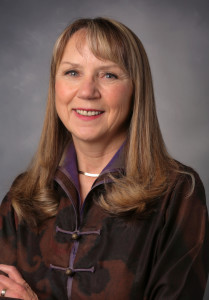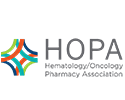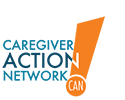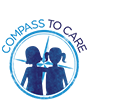Big Data in Health Care: Speaking with Nursing Leader Dr. Bonnie Westra
As part of our ongoing series on big data in health care, we spoke with Bonnie Westra, Ph.D., RN, FAAN, FACMI, Associate Professor and Director, Center for Nursing Informatics, at the University of Minnesota School of Nursing. Dr. Westra is also a member of the Institute for Health Informatics and works to improve the exchange and use of electronic health data. Here, she discusses the importance of including nursing data in big data science.

Dr. Bonnie Westra
Real World Health Care: Why is the University of Minnesota’s School of Nursing spearheading a national action plan to include nursing data in big data science? What are your goals?
Bonnie Westra: Here at the Center for Nursing Informatics, our goal is to lead the discovery, application, and cutting edge thinking for nursing and health informatics scholarship to improve the health of individuals and communities. Nurses and the field of nursing make major contributions to health care. However, as a profession, we need to do a better job of making nursing data more useful for research purposes. We have a good foundation for how to think about nursing data, but we need to move from idea to action and develop standards for capturing, documenting and integrating nursing data with other health care information systems.
Through the Nursing Knowledge Big Data Science initiative, we seek opportunities to standardize and integrate the information nurses gather in electronic health records (EHRs) and other health information technologies. This data is the source of insights and evidence used to prevent, diagnose, treat and evaluate health conditions. The addition of rich contextual data about patients and nursing care will help us develop actionable predictive models that can increase the confidence of nursing leaders’ decisions to improve patient outcomes and safety and control costs.
The key element is having nurses involved in health information policy so that nursing data is included in clinical data warehouses for analytics and research.
RWHC: How do you differentiate between the concepts of “big data” and “big data science?”
BW: When thinking about big data, most people consider the volume, or amount of data. But you also need to think about its velocity, or the rate at which data accumulates. Variety is another hallmark of big data. In health care, that can include structured or semi-structured nursing documentation, data from monitoring devices and imaging studies, scheduling and human resource data, and patient-generated data. You also need to consider the veracity, or certainty of the data, in terms of how appropriate it is for either its original purpose — perhaps at the point of use — or for a secondary use in research and analytics.
Big data science has been defined by the National Consortium for Data Science as the systematic study of the organization and use of digital data to accelerate discovery, improve critical decision-making processes and enable a data-driven economy. It encompasses the principled acquisition, curation, exploration, manipulation and interpretation of big data sets.
RWHC: Why is it so important for nursing leaders to understand the value of big data science?
BW: The ability of nurses to make optimal clinical decisions depends on having access to accurate, real-time information, regardless of the care setting. Not only does big data have the potential for improving enterprise operating and financial performance by providing greater visibility to operational issues that support or detract from cost-effective value-based care and services. It also has the potential to improve nursing practice and patient outcomes. It can support improved decision making by offering a comprehensive and synthesized understanding of patients, nurses and organizations. The results of big data analysis enhance confidence in conclusions and can be fed back into systems as clinical or managerial decision support. Plus, it can produce a more robust, timely and valid research agenda.
Unfortunately, many nursing leaders don’t come out of school with a background in information science and informatics. They are then put in a spot where they don’t necessarily understand how to make sure data is usable.
RWHC: How can big data science help to improve positive patient outcomes?
BW: Big data science can help practitioners comply with evidence-based practice and tailoring treatment to subgroups based on patients’ unique characteristics. It also gives us the ability to understand how system characteristics such as staffing models can impact patient outcomes.
As an example, I’m currently working on a study in which we’re using EHR data to understand how compliance with the Surviving Sepsis Campaign (SSC) recommendations affects mortality and complications such as kidney or cardiovascular problems. The challenge here is to make sure data is collected and organized in a consistent way so that eventually, we can determine which SSC recommendations work best for which patients.
RWHC: What are some of the main challenges nursing leaders face in terms of accessing and utilizing big data to improve positive patient outcomes?
BW: One of the biggest issues is the lack of nurse informaticians and researchers who know how to create and harness the use of the data. Couple that with competition from other health care priorities such as meaningful use, and the fact that health systems don’t receive direct reimbursement for nursing care, and you can see how nursing-related big data becomes a lower priority. We need the health care industry to look beyond financial reimbursement to the overall value of nursing in terms of preventing adverse events and readmissions and improving patient satisfaction.
Nurses are the largest group of health care providers, and it’s critical for nurse leaders to have data to demonstrate the impact of their decisions, the value of their practice and how data can facilitate decision-making. We need to prepare nurses for the future with educational programs in informatics and involve nurses in the development of health care informatics technology.
RWHC: What type of support do you think is needed for your efforts from industry?
BW: First and foremost, software vendors in this space need to start collaborating on how to standardize data across disparate systems. A common core is needed. We’ll be exploring the topic of standardizing data and processes at the upcoming Big Data Science Conference, June 1-3 in Minneapolis. I invite all Real World Health Care audience members to attend and learn how they can contribute to the future of a national big data science initiative.

















